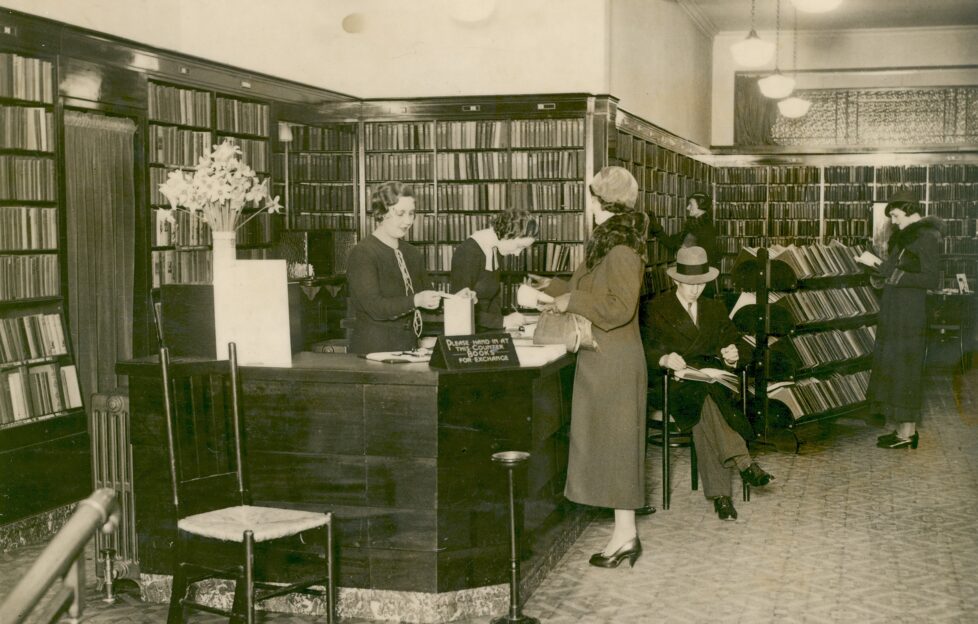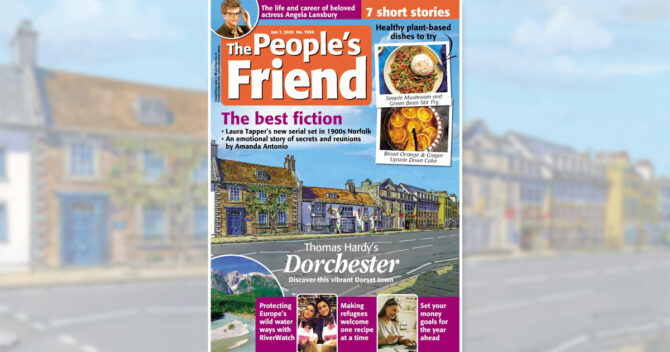Remarkable Women In History

Here at the “Friend” we like to shine a light on remarkable women in history that often don’t get the recognition they deserve. So, the fascinating tale of Florence Boot and how she brought reading to the masses is worth finding out about.
We know how much “Friend” readers love a good book. However, would you ever think of popping along to Boots, the chemist, to borrow the latest must-have novel? Well, there was a time when that’s exactly what happened. As “Friend” writer, Holly Crawford, discovered recently and was intrigued to find out more.
She’s now written a wonderful article all about the history of Boots Booklovers’ Library. It will be a trip down memory lane for some readers, while providing insight into a bygone time for others.
Holly’s full feature is in January 7 issue of “The People’s Friend”. However, here’s a flavour of some of the fascinating facts she found out about this amazing concept aimed at enhancing literacy levels among the working classes.
Boots Booklovers’ Libraries
Called Boots Booklovers’ Libraries it was so well known and loved that it featured in everything from films, to literature, as well as popular culture.
“Brief Encounter” features a scene showing Laura Jesson (Celia Johnson,) in a library. She then crosses the floor and steps into a chemist, stating, “I changed my book at Boots. Miss Lewis had at last managed to get the new Kate O’ Brien for me. I believe she’d kept it hidden under the counter for two days.”
This revelation wouldn’t have phased viewers in 1945 when the film was released as Boots Booklovers’ Libraries were still commonplace. But it has caused confusion among modern-day viewers, including yours truly, who had no idea that Boots once supplied books.
John Betjeman even immortalised the concept via his poem “In Westminster Abbey”, stating, “Think of what our Nation stands for, Books from Boots’ and country lanes.”
John Baird, author of “Follow the Moon and Stars: A Literary Journey through Nottinghamshire”, reflects on the positive effect brought about by the service, saying, “Florence Boot’s motivation for first placing books in a branch of Boots was to assist the working people of Nottingham with their literacy. From that small selection of books grew the largest library system of its type in the world, going on to help millions of readers.”
Not only did Florence provide reading material for the masses, if you were selected as a specialist librarian it did wonders for your social standing, too.
Specialist Librarians
With the exception of the Head Librarian, the libraries were staffed by women. Many secured positions after being recommended by their schools.
Employees undertook three Boots library exam papers that tested their knowledge of the library’s bespoke system, the provision of service to subscribers and their own book knowledge.
New employees were given a free Class A subscription as an incentive. Being a Boots librarian was said to boost social standing and marriage prospects!
Unlike other libraries at the time, Boots books were displayed on “open shelves”, which enabled customers to browse at their leisure. Surprisingly, it was a unique concept at a time when many public libraries had closed access.
Many branches boasted luxurious surroundings. Such as bespoke wooden bookshelves, moulded ceilings, parquet floors, window seats offering views over the town, rugs, coffee tables decorated with flowers and the latest magazines. No doubt “The People’s Friend” would have been among them.
Fast Facts
In 1938, Cecil Roberts described Boots Booklovers’ Library thus: “They yoked commerce and literature together and got them to go beautifully. Food for the body! Food for the mind!”
Kate O’ Brien was a real-life. Irish playwright and novelist.
Each Boots Booklovers’ Library had two counters for those who held Class A and Class B subscriptions respectively.
Novelist Elizabeth Taylor was a junior assistant at Boots Library in High Wycombe, Buckinghamshire, before embarking on her literary career.
A keen campaigner for women’s rights, Florence Boot founded the first all-female hall of residence at The University of Nottingham. The building still bears her name today.
Florence’s beloved Jersey benefitted from her philanthropy. She helped purchase recreational grounds and contributed to the building of houses for the island’s poor. She also commissioned the rebuilding of St Matthews Church.
Get the issue!

Copyright of DC Thomson.
Find out more about the remarkable Florence Boot in this week’s issue of “The Friend”. You can pick yours up at most major supermarkets and newsagents, or buy online. Subscribe to The People’s Friend to get every issue delivered straight to your door so you never have to miss out.
For more stories . . . Have you tried listening to “The People’s Friend” award-winning Reading Between The Lines podcast? Listen to the episode featuring “The Moonstone Brooch” by R. J. Aytoun, and find out what the Team thinks of the story that was first published in March 1, 1930.










